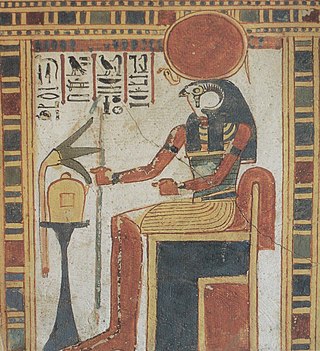
A solar deity or sun deity is a deity who represents the Sun, or an aspect of it. Such deities are usually associated with power and strength. Solar deities and Sun worship can be found throughout most of recorded history in various forms. The Sun is sometimes referred to by its Latin name Sol or by its Greek name Helios. The English word sun derives from Proto-Germanic *sunnǭ.

Horus, also known as Hor in Ancient Egyptian, is one of the most significant ancient Egyptian deities who served many functions, most notably as god of kingship, healing, protection, the sun and the sky. He was worshipped from at least the late prehistoric Egypt until the Ptolemaic Kingdom and Roman Egypt. Different forms of Horus are recorded in history, and these are treated as distinct gods by Egyptologists. These various forms may be different manifestations of the same multi-layered deity in which certain attributes or syncretic relationships are emphasized, not necessarily in opposition but complementary to one another, consistent with how the Ancient Egyptians viewed the multiple facets of reality. He was most often depicted as a falcon, most likely a lanner falcon or peregrine falcon, or as a man with a falcon head.

Nut, also known by various other transcriptions, is the goddess of the sky, stars, cosmos, mothers, astronomy, and the universe in the ancient Egyptian religion. She was seen as a star-covered nude woman arching over the Earth, or as a cow. She was depicted wearing the water-pot sign (nw) that identifies her. Nut is comparable to the Mesopotamian goddess Ninhursag also sharing her role as mother of the gods.

In Egyptian mythology, Sekhmet, from Ancient Egyptian: 𓌂𓐍𓏏𓁐, romanized: Sāḫimat; Coptic: Ⲥⲁⲭⲙⲓ, romanized: Sakhmi), is a warrior goddess as well as goddess of medicine.
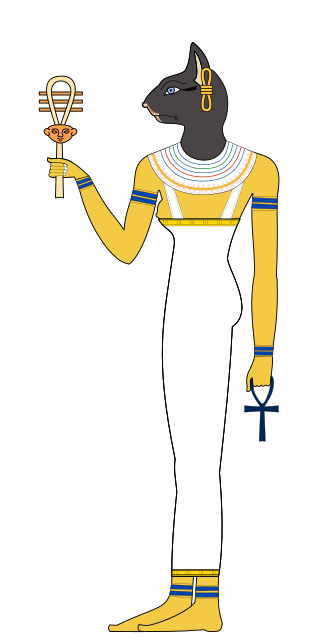
Bastet or Bast was a goddess of ancient Egyptian religion, worshipped as early as the Second Dynasty. Her name also is rendered as B'sst, Baast, Ubaste, and Baset. In ancient Greek religion, she was known as Ailuros.
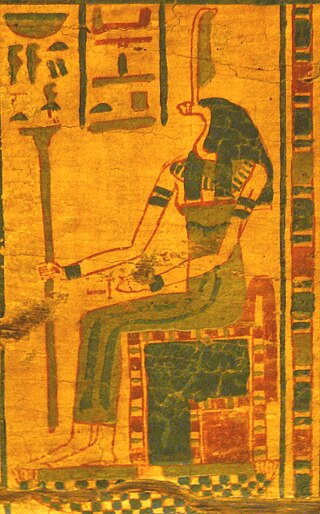
Renenūtet was a goddess of nourishment and the harvest in the ancient Egyptian religion. The importance of the harvest caused people to make many offerings to Renenutet during harvest time. Initially, her cult was centered in Terenuthis. Renenutet was depicted as a cobra or as a woman with the head of a cobra.
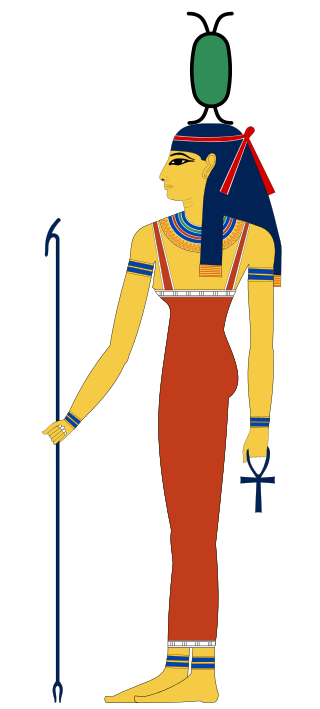
Neith was an early ancient Egyptian deity. She was said to be the first and the prime creator, who created the universe and all it contains, and that she governs how it functions. She was the goddess of the cosmos, fate, wisdom, water, rivers, mothers, childbirth, hunting, weaving, and war.
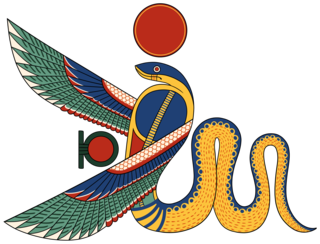
Wadjet, known to the Greek world as Uto or Buto among other renderings including Wedjat, Uadjet, and Udjo, was originally the ancient Egyptian local goddess of the city of Dep. It became part of the city that the Egyptians named Per-Wadjet and the Greeks called Buto, also being the capital of the 6th lower Egyptian nome, Wadjet it's patron deity, which was an important site in prehistoric Egypt and the cultural developments of the Paleolithic. There was also a Per-Wadjet in Upper Egypt.

Anuket was the ancient Egyptian goddess of the cataracts of the Nile and Lower Nubia in general, worshipped especially at Elephantine near the First Cataract.
In Egyptian mythology, Hemsut was the goddess of fate and protection. She is representative of the ka. Her headdress bears a shield, above which are two crossed arrows.

Mehet-Weret or Mehturt is an ancient Egyptian deity of the sky in ancient Egyptian religion. Her name means "Great Flood".
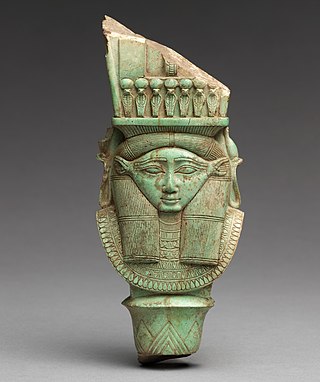
Bat is a cow goddess in Egyptian mythology who was depicted as a human face with cow ears and horns or as a woman. Evidence of the worship of Bat exists from the earliest records of the religious practices in ancient Egypt. By the time of the Middle Kingdom, after the unification of Lower Egypt and Upper Egypt, her identity and attributes were subsumed within that of the goddess Hathor, a similar goddess worshiped in another nome. The imagery of Bat persisted throughout the history of ancient Egypt on the sistrum, a sacred instrument that remained associated with religious practices.
Certain numbers were considered sacred, holy, or magical by the ancient Egyptians, particularly 2, 3, 4, 7, and their multiples and sums.
Bast is a fictional character appearing in American comic books published by Marvel Comics. The character first appeared as idol in Fantastic Four #52, created by Stan Lee and Jack Kirby, and is based on the Egyptian cat goddess Bastet. Bast is a member of the Heliopolitan and Wakandan pantheons. and the patron of the superhero Black Panther.
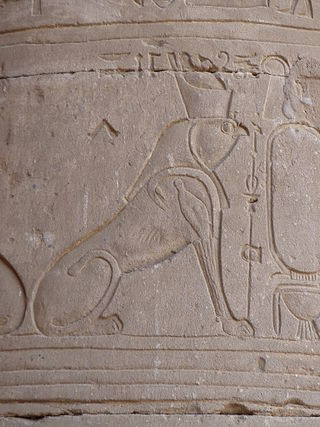
The hieracosphinx is a mythical beast found in Egyptian sculpture and European heraldry. The god Haroeris was usually depicted as one. The name Hieracosphinx comes from the Greek Ιερακόσφιγξ, which means ἱέραξ (Hawk) + Σφίγξ (Sphinx).
Tenenet, alts. Tjenenet, Zenenet, Tanenet, Tenenit, Manuel de Codage transliteration Tnn.t, was an ancient Egyptian goddess of childbirth, protection, and beer. She is mentioned in texts dating from the Ptolemaic period as well as in the Book of the Dead.













